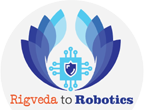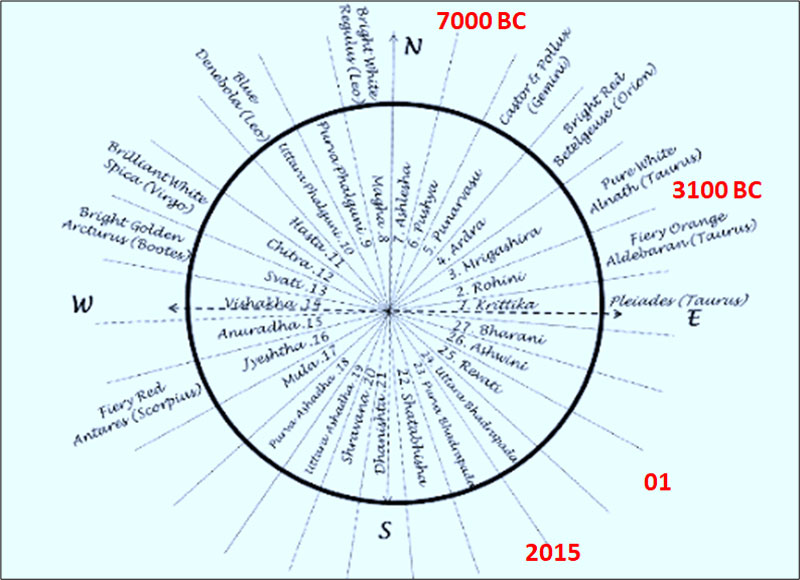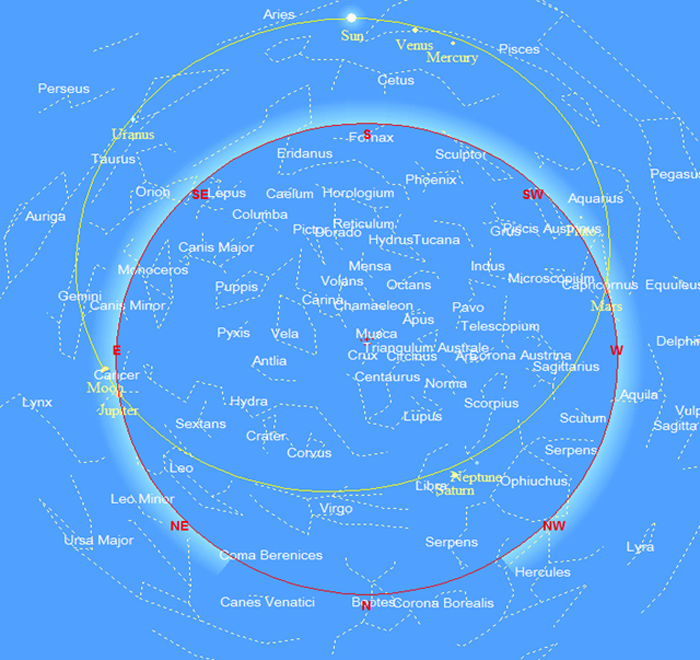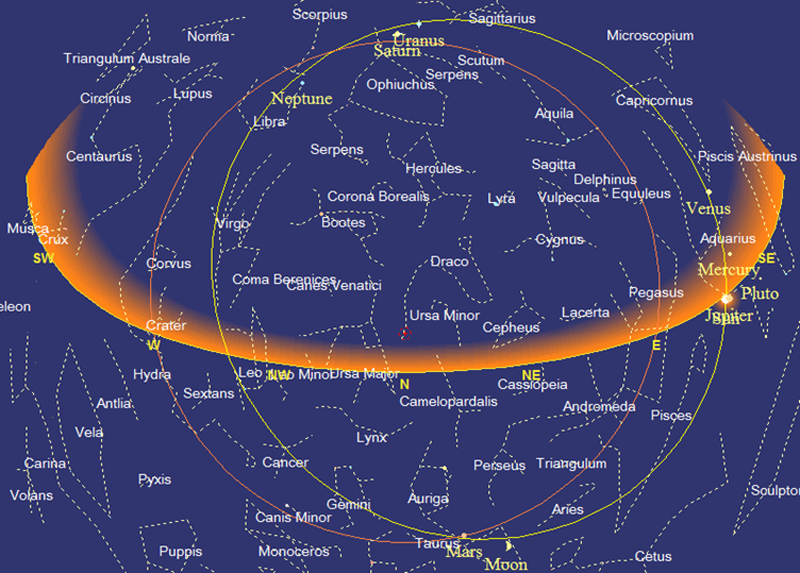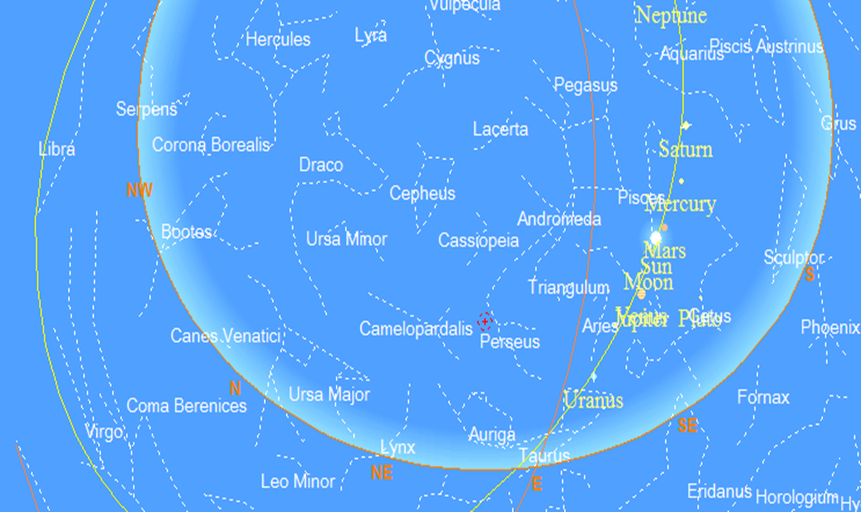Knowledge of Sciences in Vedas
SUBSCRIBE
The word ‘Veda’ in Sanskrit means knowledge. It is derived from the root ‘vid’, which means ‘to know’ or ‘that which is known’.
Rigveda was included in ‘Memory of the World’ Register by UNESCO in 2007 with the following citation – “The Vedas are generally known as the scriptures of the Hindu community. However, being among the first literary documents in the history of humankind, they transcend far beyond their identity as scriptures. The Rigveda, the oldest among the four Vedas, is the fountain source of the so-called Aryan culture in all its manifestations that spread beyond the Indian subcontinent to large parts of South and South East Asia, as well as parts of Central Asia. This valuable treasure of the ancient world has been preserved in the form of manuscripts in India, and handed down over centuries from generation to generation”.
In the words of late Dr. A.P.J. Abdul Kalam – “Vedic and post-Vedic literature has a tremendous amount of scientific knowledge which will be extremely beneficial to humanity. For creating a faith in these documents, there is a need to establish the dates of creation of Vedas and Upanishads, so that they are transformed into historical events…. The use of modern technology has facilitated researches to prove an indigenous origin of civilization in the Indians sub-continent. This is an important factor which should work as an integrator of the entire Nation since all of us have come into this land from the same ancestors and roots.”
Classification of the Vedic and post-Vedic literatur
- The Vedas are four: Rigveda, Samaveda, Yajurveda and Atharvaveda; Rigveda being the main. Each Veda consists of four parts: the Samhitas (hymns), the Brahmanas (rituals), the Aranyakas (theologies) and the Upanishads (philosophies).
- The term Upaveda ("applied knowledge") is used in traditional literature to designate the subjects of certain technical works. There are references to at least four Upavedas: Dhanurveda (Archery), Sthapatyaveda (Architecture), Gandharvaveda (Music and Dance) and Ayurveda (medicine)
- There are six Darsanas –
- Samkhya - holistic exposition of consciousness and matter
- Yoga - emphasizing holistic development of body, mind and soul
- Nyaya - explores various sources of knowledge,
- Vaisesika – tattva-gyana, including ancient knowledge of some modern sciences,
- Mimamsa - an anti-mysticist school which emphasizes on performance of duties
- Vedanta - emphasizes on knowledge centric understanding of the universe
- There are several post Vedic Sastras like; Krushi, Vriksha, Loha, Rasa, Yantra, Vyomayana, Bhoogarbha, Ganit Sasras etc.
Scientific determination of dates of planetary and other references in Vedas and Epics
- Rigveda has recorded astronomical observations like solstices and equinoxes, Naksatras and planets, solar and lunar eclipses etc.; the Sky views of some such observations, generated by using planetarium software, have revealed that these relate to the period 7000 BC to 5000 BC. Such astronomical dates get fully corroborated by archaeological, anthropological, paleobotanical, geological, ecological, oceanographic and remote sensing evidences.
- Rigveda contains comprehensive references to agriculture and farming, irrigation and ploughing, manure and seeds, utensils and jewellery, grains and vegetables etc. These items have been found in excavations and are also dated from 7000 BC to 3000 BC. However, the archaeologists, being ignorant of Vedic references, have been describing these items as Harappan.
- Valmiki Ramayan refers sequentially to sky views observed around 5100 BC whereas planetary references of Mahabharat could be observed sequentially in the sky around 3100 BC.
- The astronomical dates of references in Atharvaveda work out to be around 2500 BC. The knowledge of astronomy had got more developed by that time. Atharavaveda also contains more detailed references to flora and fauna, diseases and cures, medicines and herbs etc. of Indian subcontinent relating to the period around 2500 BC.
Methodology adopted for dating the the references in Vedas, Ramayan and Mahabharat
- Original text of Vedas, Valmiki Ramayan and more than 1 lakh slokas contained in Mahabharta (Parimal Publications) were scrutinized and astronomical references were extracted sequentially. These have been dated sequentially by making use of Planetarium version 4.1 software (Fogware), taking care of internal cosistency.
- Astronomical references extracted included - Location of solstices and equinox, Occurrence of winter solstice, Mention of month, tithi, nakshatra, Lagna, & constellation, Eclipses & Conjunctions and movements of planets.
- In Rigveda spring equinox was stated to be in Pushya nakshatra, as per Valmiki Ramayan spring equinox was in Punarvasu and in Vana Parva of Mahabharata (3.230.8), spring equinox was in Rohini. Astronomically there is precession of equinox by one degree in 72 years.
- Today Spring equinox is in 3rd quarter of Purva Bhadrapad Asterism; thus equinox has moved by more than 5.25 naksatras (Krittika, Bharani, Asvini, Revati, Uttara Bhadrapada) since this reference in Mahabharata. This means that more than 5040 years (960 X 5.25) have passed. This took our research period for dating of Mahabharata references to 3000 BC – 4000 BC).
Astronomical References in Rigveda – Vedic Calender in 7000 BC
(ऋग्वेद में वर्णित खगोलीय सन्दर्भ - 7000 ईसा पूर्व )
There are 53 references in Rigveda as prayers offered to Ashvinis at dawn. The description clearly points to the first sighting of the pair of stars in the Aries constellation just before sunrise (Heliacal Rising) after Winter Solstice to mark the year beginning (Uttarayana).
ऋग्वेद में 53 सन्दर्भ प्रातः काल अश्विन की प्रार्थना करने से संबंधित है। ये वर्णन शीतकालीन संक्रांति (उत्तरायण) के बाद के सूर्योदय से पूर्व मेष राशि में अश्विन सितारों की जोड़ी के प्रथम बार दिखने के दृश्य को स्पष्टतः दर्शाते है।
प्रातर्यजध्वमश्र्विना हिनोत न सायमस्ति देवया अजुष्टम्
उतान्यो अस्मधजते वि चाव: पूर्व पर्वों यजमानो वनीयान् ।। ऋ.-सं. ५-७७-२ ।।
हे ऋत्विजो! अश्विनीकुमारों के लिए प्रात: काल यजन करें। उन्हें हव्यादि प्रदान करें। सायंकालीन प्रदत हव्य देवों को सेवनीय नहीं होता। हमसे अन्य जो कोई पूर्व में यजन करता है, वह सब देवों को तृप्त करता है।
Worship the Ashvinis at early dawn; offer their oblations: the evening is not for the gods; it is unacceptable to them. The person who is foremost in worshiping them is the most approved of.
शीतकालीन संक्रांति के बाद सूर्योदय से पूर्व अश्विन नक्षत्रों का पूर्वी क्षितिज पर दिखना वर्ष के प्रारम्भ का धोतक माना जाता है, जैसा 5 जनवरी, 7000 ईसा पूर्व दिल्ली के आकाशीय दृश्यों में द्रष्टव्य था ।
First sighting of Ashvinis (Aries) on the eastern horizon after Winter Solstice, just before sunrise, was used as marker for the year beginning as shown in the sky views over Delhi on 5 January, 7000 BC
Sky at dawn on 5 January, 7000 BC at 07: 00 hrs shows emergence of Ashvinis, the pair of Stars in Aries constellation from Sun’s glare (Heliacal rising).
अश्विन के उद्भव को दर्शाता हुआ 5 जनवरी 7000 ईसा पूर्व, प्रातः 7.00 बजे का आकाश, सूर्योदय से पूर्व मेष राशि में अश्विन सितारों की जोड़ी के प्रथम बार दिखने का दृश्य।
Dates of Ramayan in the words of Hon’ble Dr. A P J Abdul Kalam -
- Astronomical calculations, making use of planetarium software, have proved that events narrated in Valmiki Ramayan actually occurred around 7000 years back and they can be sequentially dated. Ramasethu is found submerged at the same location as is described in Valamiki Ramayana
- As per the estimate made by NASA, the rise in the sea level during the last 7000 years has been about 2.8 meters which roughly corresponds to 9.3 feet. The remains of Ramasethu are found submerged nearly at a depth of 9-10 feet. Thus, obviously this bridge was capable of being used as a land route 7000 years back.
The skyview at the time of Shri Ram’s birth
श्री राम का जन्म समय की ग्रहों की स्थिति
Sky on 10 January, 5114 BC; 12:00 hrs 28°N.82°E
19 Dec. 3139 BC, 7:20 Hrs, Hastinapur <29⁰N, 77⁰E>; Winter Solstice, Moon in Taurus
Legendary planetary conjunction before beginning of Kali Era
कलयुग के प्रारम्भ से पहले ग्रहों का अद्भुत संयोग
Conjunction before Kali era on Jan 22, 3101 BC, 10.45 (29°N,77°E)
Sun, moon, Venus, Jupiter, Mars, Mercury, Saturn located around Aries and Pisces
22 जनवरी 3101 ई.पू., मेष व मीन राशि के आसपास स्थित सूर्य, चंद्रमा, शुक्र, बृहस्पति, मंगल, बुध और शनि
Vedas contain greater knowledge of scientific discoveries but lesser knowledge of scientific inventions
- For appreciating the scientific knowledge contained in Vedas, a distinction has to be drawn between discovery and invention.
- Discovery is figuring out and explaining something that pre-exists, while invention is creating new objects, ideas or technology by making use of objects, pre-existing discoveries and ideas.
- Scientific discoveries would basically include identification of the laws of nature through keen observation; some examples are as under-
- Laws of gravitation and theory of relativity
- Magnetism and Electro-magnetic waves
- Omnipresence and transmission of energy
- Atmosphere – oxygen, hydrogen and carbon dioxide
- Movement of planets of solar system and eclipses.
- Such scientific discoveries were recorded by Vedic Aryans around 8000 years back and by the Greeks around 6000 years back. These were reiterated and developed by Aryabhat, Bhaskaracharya and Varahamihir around 1500 years back.
- Many modern scientists of Western World made/re-recorded these discoveries again. They expanded the scope of these discoveries and also used these for making some important inventions like telescope, electricity, steam engine, aeroplanes etc.
Physics – Glimpses of some discoveries recorded in the Vedas
- The basic scientific principles relating to Energy, Heat, Magnetism, Gravitation, Electricity and Atmosphere had duly been recorded in Rigveda and Yajurveda e.g. –
- Energy can neither be created nor destroyed; it can be transmitted and transformed from one form to another (Yajur/12, 15)
- Generating fire through friction using wood pieces from Arani tree and references to oil and natural gases inside the earth (Yajur/11,12). References to coal mines and ocean fire (Atharava /16)
- Solar Energy – Sun is the soul of this whole world (Rig/1/115), there are seven colours in solar rays (Atharava/7/107), the sun neither rises nor sets and earth revolves around the sun (Ayetreya Brahman/3/44).
- The sun is holding the earth, rather the entire solar system, through its magnetic power i.e. Akarshan shakti (Rig/7/99/3, 10/149/1). The earth has gravitational force i.e. Adhah shakti and Aakrishti shakti due to which things fall on earth. Jwar Bhata is also caused due to this gravitation (Rig/10/123/2).
- Electro-magnetic Waves i.e. Maruth-gan have electricity, move around freely in the sky and create electro-magnetic fields (Rig/1/87/4, 1/88/1)
Chemistry – Glimpses of some discoveries recorded in the Vedas
- The water consists of Oxygen i.e. agni or mitra and Hydrogen i.e. som, jal or aapah (Rig/1/2/7). The seeds of creation were first sown in water (Rig/10/82/5).
- In Rigveda and Yajurveda, there are several references to jewellery and weapons made of gold, silver and copper. By about 5000 BC, during Ramayan era, artefacts and weapons out of copper, bronze and silver etc. were being made.
- During Mahabharat times around 3000 BC metallurgy was quite developed. Ornaments of gold and silver, various kinds of weapons like chisels, nails, hoax, spikes, knives, daggers etc. made of iron and copper have been excavated.
- Chemical processes for making liquor are described in Yajurveda, which is described as made out of fermented rice, barley etc. (Yaju/19/13&14); it is also described as made out of grapes i.e. draksha, barley i.e. jaun, jaggery i.e. gur and jamun (Sushrut Samhita/183-185)
- Both Charak and Sushrut referred to almost all kinds of salts which are used today, including sauvarcala (potassium nitrate), saindhava (rock salt), samudrak (sodium chloride). They also described various kinds of Alkalies, Caustics and Micas.
- Brihatsamhita of Varahmihir (4th century AD) – provides comprehensive details of gemmology, perfumery etc. Rasasastra texts were written around 600 AD.
- Famous Iron pillar opposite Qutub Minar, with diameter ranging from 16’4” to 12.5”, is more than 1500 years old and shows no signs of rusting!
Botany – Knowledge of Plants and Herbs in Vedas
- As per Rigveda, plants and herbs got created much before the birth of human beings on earth. The number of references to various plants are 67 in Rigveda, 82 in Yajurveda and 288 in Atharvaveda.
- Manusmriti has classified the plants into 8 categories Aushadhya, Vanaspatya, Vriksha, Guchh, Gulm, Trin, Prataanah and Vallyah (1/46-48)
- Sage Prasara had codified available botanical knowledge in Vrikshayurveda. The full text might be lying somewhere amongst the unread manuscripts but some extracts were published in Journal of Asiatic Society. These reveal knowledge of Vedic people about plant cells, structure of leaf, classification and description of various types of flowering plants etc. It was rewritten by Surapala in 10th century; recently translated into English.
- In Brihatsamhita (6th century A.D.), Varahamihir gives methods of vegetative propagation, details of transplantation, use of green manure etc. Various plant diseases have been explained with treatments, which include application of cow dung, ghee and extracts of medicinal herbs.
- Amarakosha (5th century AD) contains list of synonyms of 300 plants. It also contains references to 12 types of soils of Indian sub-continent.
- Hon’ble Dr APJ Abdul Kalam had said that there are twelve types of soils and 12 types of manures described in post-Vedic literature and that research projects should be taken up in this subject to develop more appropriate and nature friendly manures, keeping in mind the need of modern times.
Discoveries relating to Geology & Meteorology recorded in Vedas
- In Rigveda, it is said that earth has 7 types of dynamic plates which are mobile (Rig/1/22/16) and that it has fire inside i.e. Agnigarbha Prithavya (Rig/10/1/6).
- Yajurveda refers to natural gases which can be extracted after digging of earth (Yajur/11/18).
- In Brihatsamhita, Varahamihir has said that just as drains cultivate the gardens, the veins nurture the human body; in similar way there is a network of veins i.e. shirain under the earth which rear plants and herbs. (Brihat/1/4)
- There are several references in Rigveda and Atharvaveda stating that there is gold, silver and other wealth inside the earth which is described as Vishwagarbham (Atharva/12/1/44, Rig/10/54/5).
- Vedas describe the process of formation of clouds, role of elctro-magnetic waves i.e. Maruts in causing rainfall and different types of clouds which cause snow-fall, hail-storm and rain fall etc. Solar rays, Oxygen i.e. mitra and hydrogen i.e. varuna are described as the cause of rainfall (Yaju/22/26,38/56).
- Sun, wind and clouds give energy to earth and trees facilitate increase in rainfall. The rain nurtures plants, herbs and other living beings on earth (Rig/10/27/23, 7/101/4).
- Acharya Panini has referred to Rain-gauge instrument, Varahamihir has described 5 types of meteors i.e. ulka (Ashta/3/4/32).
- Rigveda repeatedly emphasized the need for keeping atmosphere fee of pollution (Rig/10/186/3, 10/35/2).
Ancient Indian Astronomy and Mathematics
- There are several astronomical references in Vedas, but a proper ancient book on the Science of Astronomy is Vedanga Jyotish, which is believed as composed around 1500 B.C.
- The Earth revolves around its father-like Sun whereas Moon revolves around its mother-like earth (Rig/10/189/1 & Yajur 3/6). The cause of day and night, change of seasons are also explained.
- Dakshinayan and Uttrayan movements of the Sun for 180 days each have been described (Maitri Upnishad/6/14) along with reference to Equinox and Solstice (Rig/1/164/43).
- The names of 27 Nakshatras and of 12 constellations have been given in Taitreya Samhita (4/4/10/1-3). The names of different planets find place in Vedas, Epics and Brahamanas.
- By 5th century A.D. the knowledge of Astronomy and Mathematics had got significantly developed. Aryabhata (476–550 AD) had compiled valuable knowledge on –
- arithmetic and geometric progressions
- simple, quadratic, simultaneous, and indeterminate equations
- method for determining the positions of planets for a given day
- calculations concerning the intercalary month
- Geometric/trigonometric aspects of the celestial sphere,
- features of the ecliptic, celestial equator, node, shape of the earth,
- rotatory motion of Earth and phenomena of Solar and Lunar Eclipses
- Varahamihira had explained lunar and solar eclipses in greater detail. Brahmagupta (598–670 AD) helped bringing the pre existing concept of zero and that of decimal into arithmetic. Bhaskara (600–680 AD) gave methods to find mean longitude of planets. Vedas knew counting up to 17 zeroes, and subsequently even up to 24 zeroes.
Technology in Ancient India – Vedic Inventions of weapons
- Rigveda (7000-5000 B.C.) was composed by ten Rishi families, out of these five were frequently visited by Lord Ram (around 5100 B.C.). They included Rishi Vishwamitra and Sage Agastya Muni who were extremely proficient in Astra-Sastra Vidya. The weapons invented in those days can be divided into five categories :-
- Astra (projectiles, arrows and missiles which were thrown with the help of yantras or mantras) – Maharishi Viswamitra had given to Lord Ram the divine astras (missiles) like Dandachakra, Kalachakra, Vishnuchakra and Indrachakra; he also gave him Brahmastra, powerful Agni-astra, Sammohan-astra, Mohan-astra. Sage Agastya Muni gave Diviya Dhanush, Amogh Vaan and many other kinds of arrows to Lord Ram (Ramayan/1/27). Mahabharat refers to many more additional astras like Varunastra, gandharvastra and Pasupatastra etc. (Adi Parva). It also refers to projectiles like Sudarshan Chakra.
- Sastra (choppers, swords, axes, spears, etc.) – Sage Agastya Muni had given a sword to Lord Ram (3/12/32-37). Sage Parsuram was proficient in using swords and axes.
- Dandayudha (strikers, e.g. gada (mace), musala (mortar, etc.) The sage Viswamitra gave Lord Ram two maces named Modaki and Shikhari (Ramayan/1/27). There is reference to mace battle between Duryodhan and Bheem in Mahabharat (9/34/5-7).
- Yantrayudha – mechanical weapons like sataghni, bhusundi etc. are described both in Ramayan and Mahabharat .
- Pasa (binding nets, ropes). The Sage Viswamitra had also given to Lord Ram Dharmapaash, Kaalpaash and Varunapaash (1/27).
- Most of these weapons have also been described in Yajurveda and in Kautilya’s Arathshastra. Many of these weapons will match the description of weapons still used by many tribes in India; Some others like Sammohan-astra and Mohan-astra are waiting to be re-invented.
Technology in Ancient India - Vedic Architecture and references to Vimanas
Architecture
- More than 32 types of houses are mentioned in Rigveda which include –
- A three-storied house (8/47/5)
- A thousand pillared building (7/88/5)
- Air-conditioned house (Atharava/6/106/1-3)
- Atharava Veda deals with several essential aspects of constructing houses, which should have doors and windows, agnishala and store room, drawing room and guest room etc. (9/3/7-8).
- Brihatsamhita describes the method of preparing vajralep which could be used for very long life of buildings and structures.
Vimanas
- There are several references to Divya Ratha i.e. Vimanas in Rigveda & Atharvaveda; Ribhu is stated as the maker of these Vimanas (Rig/1/111/1). However, sufficient and reliable literature is not available about the method and manner of making Vimanas. The only definitive reference available is in Samrangansutradhar/Ch.31 authored by Maharaja Bhoj in 11th century A.D.
- There are repeated references to “Vaimanik Prakaran” authored by Sage Bhardwaj but its copy is not available; possibly it is lying somewhere amongst lacs of unidentified manuscripts in India and abroad.
- In the ‘Brihad Vimana Shastra’ edited by Shri Swami Brahm Muni, six ancient books have been referred to on the subject – (i) Vimanachandrika by Narayan (ii) Vyomanshastra by Shaunak (iii) Yantrakalp by Garg (iv) Yaanbindu by Vachaspati (v) Khetyaanpradipika by Chakrayaani (vi) Vyomanprakash by Dhundinath. However none of these are available for verification/investigation.
Technology in Ancient India – Vedic Inventions of medicines
- Rigveda refers to Naturopathy which includes Surya-chikitsa, Jal-chikitsa, Vaayu-chikitsa etc. (10/105/5, 10/186/1, 10/137/6).
- Ayurveda is the most ancient as well as living system of Indian medical sciences. Dhanvantari is considered to be the founder of Ayurveda. Pre Ayurveda knowledge is contained in Atharvaveda also. However, very vast knowledge on the subject of Ayurveda was compiled by Sushruta and Charaka somewhere around 800 BC.
- Sushruta Samhita, father of surgery, describes more than 300 different operations and 121 surgical instruments, which include tongs, forceps, scalpels, syringes, needles, scissors and probes etc. He also described –
- method for the preservation of dead body for dissection
- bladder surgery, plastic surgery of a mutilated nose etc.
- administering anaesthesia for painless surgery
- Charak Samhita acknowledges the germ theory as cause of diseases. However comprehensive details have been given for different kinds of diseases caused by imbalance of vata (wind), pitta (gall), and kapha (mucus). Ayurveda works on removing the causes of ailments and propagates holistic treatment.
- Ancient Indian medical knowledge and surgical practices influenced the medicinal systems of Greece and Arabia in a fundamental way.
YOGA is defined as ‘that state in which the senses, mind and prana are unified and silenced’. It is also described as the merger of self into the Supreme Self
- There are references to Yoga in Vedas and in Srimad Bhagvad Gita. In Katha Upanishad, Yoga is defined as a state of steadiness of senses, mind and intellect. Yoga is a way of life by which man can attain perfection through the fullest development of his faculties.
- Patanjali’s Yogasutras present comprehensive compilation of different types of yoga and yogic practices. Eightfold path prescribed by him includes Yama, Niyama, Asana, Pranayama, Pratyahara, Dharana, Dhyana and Samadhi.
- Yoga aims at purifying the mind by removing five types of afflictions namely – ignorance, egotism, attraction, hatred and fear.
- There are four main varieties of Yoga – Raja Yoga, Bhakti Yoga, Karma Yoga and Hatha Yoga. The essence of all of them is detached attitude, tranquillity and practice.
- Yogic practices elevate consciousness. Progress in Yoga is the journey of the self from individuality to universality. Patanjali delineates the eightfold path of Yoga to facilitate this journey step by step.
- In modern times Yoga exercises, pranayama, and meditation have become very popular. Yoga exercises are more scientific as compared to many exercises/practices under Physiotherapy. Yogic exercises combined with pranayama and meditation facilitate the holistic development of human beings.
Modern sciences have their beginnings from 16th century and developed in 20th century- examples
- Nicholas Copernicus (1473-1543): astronomy, Solar system, made incomplete model of earth’s revolution around Sun.
- Galileo Galilei (1564 -1642) – astronomy and telescope. He explained that earth is round & moves around sun.
- Newton (1642-1727)- theory of gravity and laws of motion.
- William Harvey (1578-1657)- blood circulation through the body
- Alexander Fleming – discovered first antibiotic Penicillin in 1928.
- Per Henrik Ling (1813) - father of Swedish Gymnastics, is considered to be the first one to introduce physical therapies in 1813.
- Antoine Lavoisier (1743 – 1794) - is considered father of modern Chemistry.
- Andreas Vesalius (1514 – 1564) is considered the father of modern anatomy who authored original books on human anatomy.
- Sir William Osler (1849 – 1919), a Canadian physician, is considered to be the "Father of Modern Medicine"
Various sciences in ancient Indian manuscripts have their beginnings from 7000 BC and continuous development till 1200 AD - examples
- Rigveda (7000 – 6000 BC) - makes basic references to nakshatras and movement of sun, moon and earth (10/189/1), boats, plants, yoga, agricultural implements and jewellery.
- Yajurveda (around 4000 BC) – Numbers up to 1000 billion (1012 ), later developed to (1024 ).
- Atharvaveda (3000 – 2000 BC) – Early knowledge of Physics, Chemistry, Botany and medicine (pre-Ayurveda) etc.
- Vedic Mathematics, Vedic time reckoning and Vedic Astronomy Sulbha Sutras containing geometric knowledge (Before 1500 BC).
- Ayurveda - Charak Samhita and Susruta samhita (around 800 BC)
- Vaisesikas (before 500 BC) - Early concepts of atom, space, time, motion and sound are contained in these.
- Aryabhatiya (500 AD) advanced astronomy, rotation, precession, eclipses and advanced mathematical calculations.
- Bhaskaracharya: advanced astronomy – 700 AD
- Siddhantasiromani of Bhaskarachaya II - advanced astronomical and mathematical work of 11th century.
- Sarangdhar Samhita and Rasasastra – details include urine and pulse examination for diagnostic purposes and alchemical practices 12th Century.
